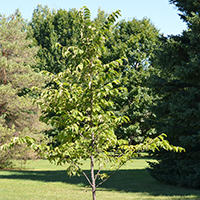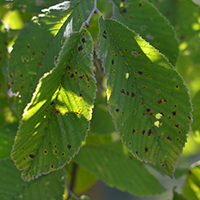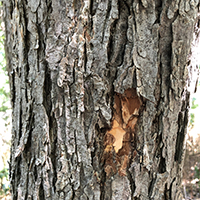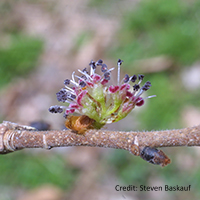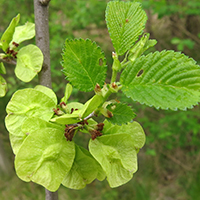What slippery elm looks like
Size and shape
- Reaches 25 metres high.
- Trunk reaches up to 60 centimetres in diameter.
Leaves
- Green and hairy with an elongated tip and finely toothed edges (15 to 20 centimetres).
- Leaves are fragrant.
Bark
- Brown, furrowed bark with irregular ridges.
- Inner bark is fragrant.
Flowers
- Greenish-red flowers grow in tassel-like clusters on short stalks.
Fruit
- Rounded keys known as samaras with a winged central seed.
- Seedcase covered in reddish-brown hairs (10 to 15 millimetres).
Where slippery elm is found
Slippery elm is uncommon in Canada but can be found in Southern Ontario as far north as the southern Canadian Shield in the Great Lakes region and extending east into Quebec.
What you need to know to grow slippery elm
- Moisture: grows best in moist, well-drained soils.
- Soil: grows best in loamy or clay-loam soils.
- Shade: grows best in full sun to partial shade.
- Caution:
- Dutch elm disease is caused by an invasive fungus that develops under the bark of elm trees. Leaves wilt and eventually stop growing. Infections usually kill the tree in 1 to 3 years. Control measures include removing dead foliage and branches, avoiding transport of wood and injecting fungicides.
Benefits and uses of slippery elm
Wildlife benefits
Slippery elm leaves, sap and bark are important food sources to many species:
- over 100 insect species feed on the leaves and host their larvae in the bark
- birds, such as finches and ducks, eat the buds and seeds
- beavers eat the wood
Slippery elm trees also offer nesting sites to birds, such as Baltimore orioles.
Commercial uses
Slippery elm wood is durable and used to produce:
- furniture
- paneling
- fence posts
Fun facts about slippery elm
- Slippery elm trees can live up to 125 years.
- Slippery elm inner bark contains mucilage, making it slippery, which is where the tree gets its name.
Updated: October 04, 2023
Published: October 04, 2023
